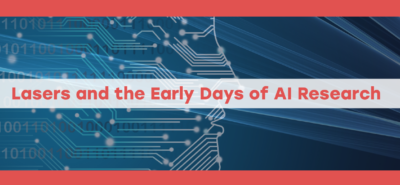The History of Lasers – From The Original Ruby Lasers to Femtosecond Pulsing
Power Technology2023-01-10T13:23:10-06:00The history of lasers is rich with advancements in science and engineering, culminating in the wide range of applications and technologies that we have today. The first working laser was demonstrated in 1960, utilizing the concept of stimulated emission of radiation, proposed by Albert Einstein in 1917. Known as the ruby laser, it was a pulsed device that produced a red light at a wavelength of 694.3 nanometers. Although a number of advancements rapidly occurred over the first years of laser development, it was the invention of the HeNe (helium-neon) laser that marked a significant advancement in the field of lasers.
The HeNe laser, invented in 1963 by Ali Javan and his colleagues at General Electric, used a mixture of helium and neon gases to produce a continuous-wave output at a wavelength of 632.8 nanometers. This laser had a number of advantages over the ruby laser, such as higher power output and greater stability. The HeNe laser soon found its way into a variety of applications, but due to the size of necessary equipment and power consumption, was mainly limited to research and laboratories.
A major breakthrough in laser technology came with the development of diode-based lasers. These lasers use a semiconductor material, such as gallium arsenide, as the gain medium and rely on electron-hole recombination to generate a beam of light. Diode-based lasers are smaller, more compact, and consume less power than their gas-based counterparts. The invention of the diode-based laser marked the beginning of a new era in laser technology, as these lasers could be integrated into a wide range of applications, including telecommunications, industrial manufacturing, and consumer electronics.
Recent advancements in the field of laser technology have led to the development of new types of lasers such as fiber lasers, disk lasers, and quantum cascade lasers. These lasers have improved performance and reliability and have opened up new application areas in scientific research, medicine, and industrial manufacturing. They have increased the energy density, beam quality and beam size of lasers, allowing higher precision and faster processing rates.
Pulsed lasers of today are nothing short of miraculous and can be classified according to the duration of their pulses, which can range from nanoseconds to femtoseconds. A nanosecond is one billionth of a second (1 ns = 10^-9 s), while a femtosecond is one quadrillionth of a second (1 fs = 10^-15 s).
One of the most common types of pulsed lasers is the picosecond laser. These lasers have pulses that last between 1 and 10 picoseconds (1 ps = 10^-12 s). They are widely used in applications such as laser-induced breakdown spectroscopy (LIBS), laser micromachining, and laser-induced fluorescence. Femtosecond lasers refer to another type of high-speed laser with pulses lasting only a few femtoseconds. This ultra-short pulse duration allows them to produce extremely high peak power that can be utilized in various applications such as laser material processing, ultrafast spectroscopy, and ultrafast imaging. They are also highly preferred in precision microfabrication, laser microsurgery and laser-based medicine. The newest addition in the category of high-speed lasers is the attosecond laser. These lasers generate pulses lasting for a few attoseconds (1 as = 10^-18 s). These ultrashort pulses are used for ultrafast measurements and imaging of electronic processes in materials and biomolecules.
The history of lasers is a story of continuous progress and innovation, and the future of lasers is exciting, with researchers continuing to work on developing new applications using the ever-expanding abilities lasers. The advancements in laser technology will continue to shape the way we live and work and will play a vital role in shaping the future of many industries. The Laser Experts at Power Technology have been a part of the laser community since 1969 – making us one of the oldest laser companies in the United States. Give us a call or explore our website further to learn more about our products, services, and capability offerings.


